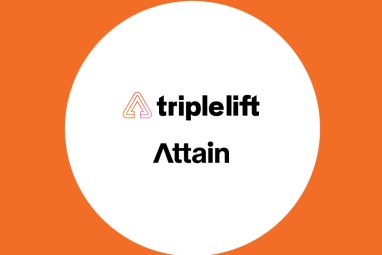Salesforce Expands Commerce Cloud To Offer Flexibility to Customers
Salesforce is expanding its Commerce Cloud with a number of new partnerships and features that essentially surmount to the idea of a ‘headless commerce platform’. The aim is to be as composable as possible, whilst offering flexibility and choice for buyers, so that they can adapt to their individual market and customer needs. Robert Amezaga, […]
Topics
What to Read Next
- TripleLift Announces Partnership with Attain to Unify Context and Commerce
- Seedtag Partners with IRIS.TV to Expand Contextual Signals for CTV Targeting
- Magnite, Cognitiv Announce Deep Learning Integration for Real-Time Curation
- Dscout Announces Integration with HeyMarvin
- Comscore Launches Program-Level Capabilities within CCM

Salesforce is expanding its Commerce Cloud with a number of new partnerships and features that essentially surmount to the idea of a ‘headless commerce platform’.
The aim is to be as composable as possible, whilst offering flexibility and choice for buyers, so that they can adapt to their individual market and customer needs.
Robert Amezaga, VP of Product Marketing, Salesforce Commerce Cloud, said: “A lot of customers talked about digital transformation, and they had a roadmap to do all of these things, but COVID-19 really accelerated that. So something that they had planned for three to five years out had to happen within the year. A perfect example is what we call buy online, pick up in store, or click and collect. How, as a retailer, am I going to get my product to you? I can ship it to you, but there are problems with logistics as well.”
Headless commerce
Salesforce’s ambition is to pursue a ‘headless commerce’ model, whereby retailers can build shopping experiences that best suit customer needs and meet their expectations, with easy integrations and plug and play capabilities. Salesforce also states that it wants to help its customers meet their customers where they are, including new regions and markets.
Some of the recent announcements to support this, include:
- PayPal at Checkout for Salesforce Payments – Salesforce has added PayPal to their checkout experience with a click-based configuration. Brands using Salesforce Payments now have more options, with the aim of reducing checkout friction and to drive sales.
- Salesforce Commerce for B2B Wholesale Retail – built on Commerce Cloud by ISV partner XCentium, this new digital portal for wholesale apparel and fashion companies supports preseason ordering, in-season re-supply, and fully automated interactions across self-service and sales teams.
- New Datorama and Tableau features – these aim to help companies connect and visualise data from their cross-channel marketing campaigns with customer order data from Salesforce Commerce Cloud and Amazon, providing real-time insights and analytics. Salesforce hopes that this will help customers optimise relationships, ROI, and revenue.
- Salesforce Social Commerce for China with Alibaba – first announced in September and now generally available, this platform supports eCommerce across China-specific channels, including social networks and .CN websites. This goes back to Salesforce aiming to help customers expand their reach into new markets.
Flexibility for buyers
Salesforce’s key message is one of flexibility in its Commerce Cloud. How do you adapt quickly to change? Amezaga says that a lot of companies grapple with eCommerce systems or ERPs that are archaic and essentially a ‘black box’ – making it hard to quickly change processes.









































































































